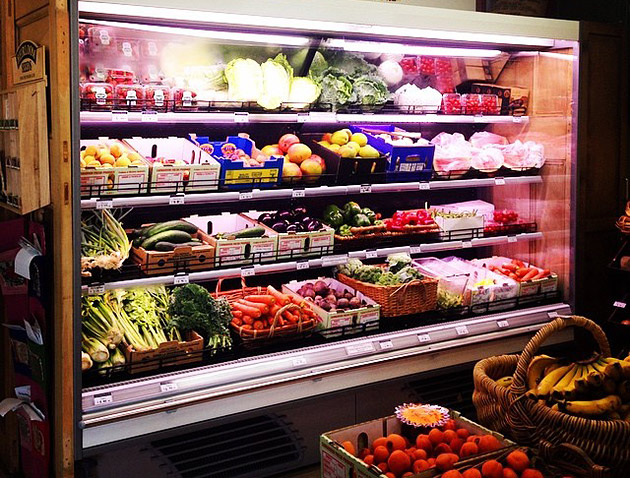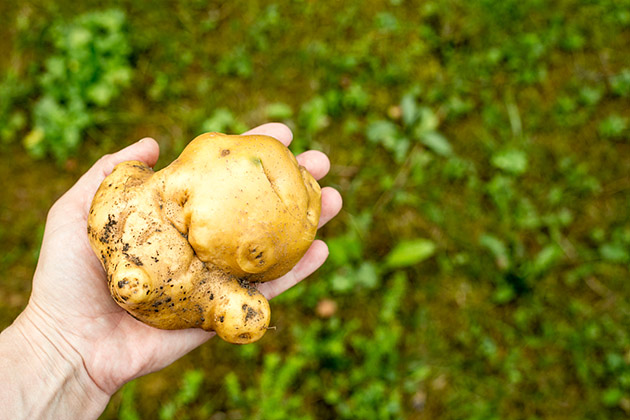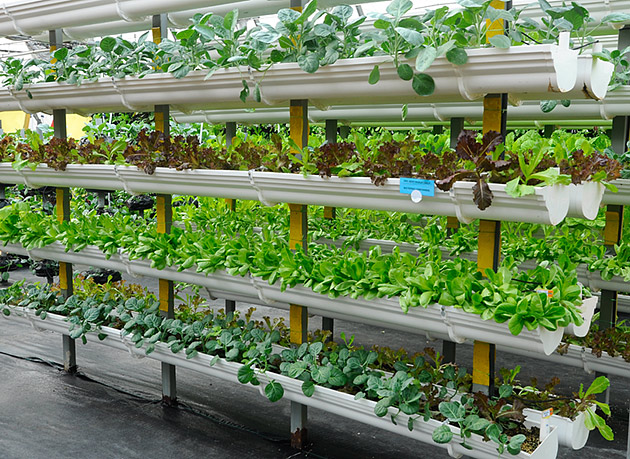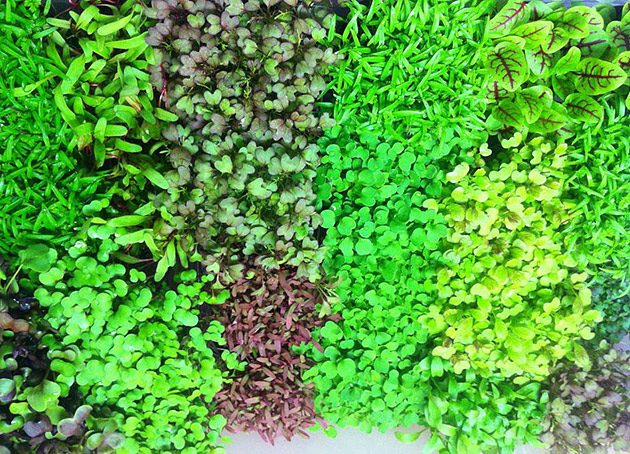6 August, 2019 By: Ruth Callaghan
Plenty of office workers have dreamed of leaving the city behind and running a farm in WA's South West, but for Adam Liddiard the dream has worked the other way.
In fact, his productive farming property takes up a grand total of 40sqm in an office block in Hay Street, West Perth, where he grows microgreens - early stage vegetables that are flavour of the month in many restaurants.
His secret is vertical farming - one of a host of new agricultural technologies that are changing the way we grow and consume food.
While most of the focus on new technologies used in agriculture (referred to as agtech) has been on the side of producers - drones to check farm fences and smart machines to distribute exact doses of fertiliser - the impact on consumers is only just beginning to be seen.
Growth of the sector lies in consumer hands
KPMG estimates the future consumer will demand a lot more from their food suppliers than they have in the past, wanting to know more about what they’re eating, where it comes from and how it was grown, as well as whether it was produced ethically and sustainably.
In a major report on the sector commissioned by the National Farmers Federation, KPMG concludes that for Australian farming to keep growing it will need to embrace technology and think about how to get clean, quality Australian food into the hands of more demanding consumers.
Those demands are already being seen in the way online shopping is changing the way we source produce.

Better ecommerce options are creating a digital farm gate, allowing farmers to send what they grow, breed or make straight to willing buyers, who order online or subscribe to deliveries.
The shift means small producers can cut out wholesalers and middle steps in the market.
It’s also seen the rise of start-ups that are trying to reduce food waste, not just boost food sales, selling so-called ‘ugly’ food that would be rejected by supermarkets, and connecting growers who have surpluses with foodbanks and charities.
Bernie Morrow is one of the owners of the Organic Collective in Fremantle, which sells produce direct from local producers in their Hamilton Hill store and online.
Morrow says he has seen a rise in interest among buyers wanting to know more about the origin of their food.
"Provenance is becoming more important and it helps give people more of an understanding and even an emotional connection to their food," he says.
“Supporting local businesses and growers is also important, with the distrust of some of the food grown overseas, and seasonality is a big message out there, with people buying food in season so it's fresher and also cheaper in price.”
The Organic Collective works with a wholesale farmers’ market as well as with individual farmers and experimental small batch producers.
“We have quite a lot of small businesses that might be start-ups where people have a passion for food and are creating unique products locally,” he says.
“We have a lady who produces a raw cracker in a bag that you basically mix with water on a low heat in the oven, and you can create your own organic cracker – they are delicious.
“We have people making organic chocolate products and another producer who started off doing jams and pickles through urban foraging who now makes organic stock using certified local ingredients.”

Provenance matters
The rise of DNA matching technology and encrypted record keeping systems are improving the ability of consumers to know exactly where their food has come from — right down to the individual farming property.
A growing number of big players, including IBM, EY and the Commonwealth Bank, have begun experimenting with blockchain technology to trace food back to its source, using an encrypted records system to prove the place of origin and create more trust in supply chains.
Whether it is organic beef, sustainable rock lobster or a top bottle of Margaret River red, buyers will be able to check the origin of products and be certain that what arrives on the table in Shanghai or Tokyo is authentic — a breakthrough given counterfeit food and wine is estimated to have cost Australia $1.7 billion in 2017 alone.
And then there’s the technology helping growers develop new types of food, from gluten-free beer, being developed by Billabong Brewing in Myaree for people with coeliac disease, to WA’s edible insect farm GrubsUp, which is producing whole roasted mealworms and hazelnut cricket dukkha, betting on a growing market for insect-based nutrition.

The urban farm gate
For Adam Liddiard, technology has meant he can create an urban farm in the heart of the city, selling microgreens, which are higher in nutrients than fully developed vegetables.
A former hydroponics shop owner, Liddiard only realised the market for microgreens when he was approached some years ago by a chef wanting to grow his own. He started Just Microgreens in Margaret River, before shifting to the city.
“We moved on the hunch that if we could almost make it work down south it would have to be easier in Perth,” Liddiard says.
“Now we have a 40sqm brand new office unit. We stripped out the carpet and got permission from the owner and the council, and there we go.”
The secret to his urban farm is vertical farming technology, a low soil, low water way of farming indoors. Growing trays are stacked vertically using an industrial set up of lights that allow fast, consistent growth.

For microgreens, which can be picked a week or even days after sprouting, it means Liddiard can get fresh produce straight into the kitchens of Perth’s chefs as soon as it is harvested.
“With the traditional supply chain, you have the growers out in the field producing en masse and they usually go through a middleman that distributes the produce through a network of customers,” Liddiard says.
"With my technology and system, we produce right in the city, park next to our customers and deal directly. It reduces costs quite a lot and therefore the end user, the chefs in our instance, get a cheaper product that’s better and they can interact directly with the grower."
“For me, vertical farming and indoor lighting means we can put our farm in close proximity to the end user.
“This technology is beginning to give people the opportunity to become farmers without spending millions of dollars on land and machinery.”
Enjoy this story? Get more of the same delivered to your inbox. Sign up to For the Better eNews.
We're also using technology to make the future better
We're thinking about the future now so we're ready for the changes ahead. An important part of our planning for the future is looking at how we can live, work and move around our State more sustainably.
